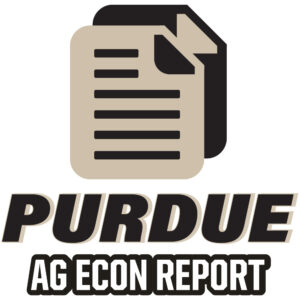Profits Bloom for Cow-Calf Producers
December 13, 2014
PAER-2014-14
James Mintert, Professor of Agricultural Economics
The U.S. beef industry has suffered from the effects of both high feed prices and drought conditions over the last several years. The run-up in productions costs and resulting negative operating margins led producers to reduce beef cow inventories to a level not seen since the early 1960’s. The result? U.S. per capita supplies of beef are the lowest they’ve been since the early 1950’s and will remain low through the latter part of this decade.
The dramatic decline in beef supplies pushed retail beef, slaughter cattle, and calf prices all to record levels in 2014. Sharply lower feed grain prices, combined with increasing forage supplies and record high calf prices, will encourage cow-calf producers to expand their herds. However, it will take several years before expansion produces significantly larger beef supplies and weaker cattle prices. In the meantime, cow-calf operations will reap the benefits of the strongest margins in decades over the next several years.
The key to changes in future beef supplies and prices will be determined by the cow-calf production sector. Profit-ability and availability of forages drives cow-calf producers’ expansion decisions. Production costs for cow-calf producers declined in 2014 compared to 2013 and could decline again in 2015 with normal weather conditions. Lower costs and sustained record high calf prices mean a dramatic turnaround in profitability for the sector. The improved profit picture is encouraging some producers to begin holding back females leading to a gradual rebuilding of the nation’s beef cow herd. However, female retention this year and next is not expected to produce meaningful increases in beef supplies for several years. The real impact of herd expansion will not be felt until 2017 and beyond thus resulting in sustained cow-calf profitability through the latter part of this decade.
The cattle feeding profit picture has also improved dramatically during 2014 with the increase in profitability attributable to both record high slaughter cattle prices and declining feed costs. Cattle feeders are margin operators that benefit from reduced feed costs, but their costs for replacement cattle are surging and so cattle feeding margins will tighten appreciably in 2015.
Longer term, profitability in the cattle sector will be determined in part by the strength of consumer demand in the face of record high beef prices. An improving U.S. economy is supporting domestic beef demand with the beef demand index on track to post a strong year-to-year increase in 2014. Tight supplies and record high retail beef prices could lead to modest declines in beef export volume the next couple of years. In the longer term, export prospects will be tied closely to consumer in-come growth in importing nations. If consumer incomes continue to grow in key importing nations, beef export growth will resume, but not until U.S. beef supplies start to increase.
